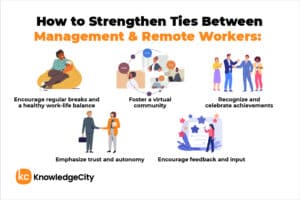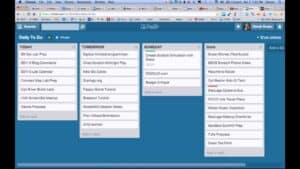Streamline Operations with GPS Tracking for Your Remote Team
GPS tracking has revolutionized how businesses manage their remote teams. It provides precise data on employee locations, task completion, and project status, giving companies a better way to monitor performance and optimize resources. In this article, we’ll introduce the key benefits of GPS tracking for teams, explain how to implement it effectively, and explore the best tools available.
Introduction: Why GPS Tracking Matters for Your Team
Managing a remote team can be challenging, especially when team members are spread across different locations or constantly on the move. Traditional time tracking methods often fall short, leading to inefficiencies and a lack of accountability. GPS tracking offers a more accurate, real-time solution, allowing managers to track employee movements, improve job costing, and boost overall productivity.
For companies with field employees, service teams, or delivery drivers, GPS tracking has become essential. Not only does it help monitor team movements, but it also ensures safety, reduces idle time, and enhances customer satisfaction by providing accurate ETAs and task updates.
How GPS Tracking Works for Remote Teams
GPS tracking systems rely on satellite technology to determine the exact location of an employee’s mobile device or a company vehicle. Once integrated into your business processes, these systems provide detailed reports and data that can be accessed in real-time or analyzed later.
Key Features of GPS Tracking:
- Location Tracking: Know exactly where team members are during work hours.
- Task Monitoring: Track job progress and time spent at different locations.
- Safety & Compliance: Ensure that employees follow safety protocols and remain within designated areas.
- Job Costing: Accurately estimate the cost of jobs by tracking time spent at various sites.
- Real-Time Alerts: Receive notifications when employees arrive or leave job sites, ensuring that projects stay on schedule.
Benefits of GPS Tracking for Team Management
1. Enhanced Accountability and Productivity
When team members know their location and progress are being monitored, they are more likely to stay focused and complete tasks efficiently. GPS tracking fosters accountability, making it easier to manage large teams without micromanaging.
2. Optimized Resource Allocation
GPS tracking systems allow managers to monitor multiple teams in different locations. This data can be used to optimize workflows, assign resources more effectively, and respond to urgent tasks with speed.
- Example: A delivery company can monitor driver routes in real time and reassign deliveries to the closest available driver to reduce delays.
3. Accurate Job Costing and Billing
GPS tracking allows you to collect precise data on the amount of time employees spend at various job sites. This not only improves job costing accuracy but also ensures you’re billing clients correctly for the time spent on their projects.
4. Improved Employee Safety
By tracking location, you can ensure that your team members remain in safe areas, receive help quickly if needed, and follow safety protocols. This is particularly important for field service teams or employees working in potentially hazardous environments.
- Example: A construction company can monitor workers on a large site to ensure they remain within designated zones, reducing the risk of accidents.
5. Better Customer Service
For businesses in the service industry, GPS tracking enables more accurate ETAs, real-time updates, and faster response times. Customers will appreciate the increased transparency and timely service.
6. Reduced Fuel and Maintenance Costs
For companies with vehicle fleets, GPS tracking can monitor driving behavior, reduce fuel consumption, and ensure vehicles are maintained efficiently. By minimizing idle time and preventing route deviations, you can reduce operational costs significantly.
How to Implement GPS Tracking in Your Business
1. Choose the Right GPS Tracking Tool
The first step is selecting a GPS tracking system that integrates seamlessly with your existing workflow and tools. Consider whether you need GPS tracking for individual employees, company vehicles, or both. Also, consider whether the tool provides additional features like real-time notifications, reporting, and task management.
2. Set Clear Policies and Communication
Introduce the GPS tracking system to your team by clearly communicating why it’s being implemented. Emphasize the benefits for both the business and employees, such as improved safety, efficiency, and fairness in task assignments.
3. Customize Alerts and Notifications
Most GPS tracking tools allow you to set up custom alerts based on certain triggers—like when an employee arrives at or leaves a job site. Use these notifications to ensure timely updates and to monitor project status in real time.
4. Train Your Team
Once the GPS tracking system is in place, it’s important to train your team on how to use the tools. This includes explaining how to log time, manage routes, and optimize work schedules using the data provided by the system.
Top GPS Tracking Tools to Simplify Your Business Operations
Hubstaff
Hubstaff offers GPS tracking for remote teams and businesses with field workers. It provides time tracking, productivity monitoring, and detailed reporting, making it a versatile tool for managing both in-house and mobile teams.
TSheets by QuickBooks
TSheets is an employee time tracking app with integrated GPS functionality. It’s ideal for businesses that need accurate time logs combined with location data. It also integrates seamlessly with QuickBooks for payroll and job costing.
Bouncie
Bouncie is a vehicle GPS tracker designed for businesses with delivery or service fleets. It monitors vehicle routes, provides alerts for idle time, and tracks driving behaviors like speeding or hard braking to improve safety.
Fleet Complete
Fleet Complete is a comprehensive fleet management system that includes GPS tracking for vehicles. It offers route optimization, fuel monitoring, and asset tracking to reduce costs and boost efficiency.
Trackforce Valiant
Designed for security and law enforcement teams, Trackforce Valiant provides GPS tracking and real-time monitoring to enhance employee safety. It’s ideal for businesses needing secure, compliance-focused tracking.
Conclusion: Why GPS Tracking is a Game-Changer for Remote Teams
GPS tracking offers a powerful way to manage remote teams, whether you’re in the service industry, managing delivery drivers, or overseeing a construction crew. By providing real-time location data, task monitoring, and job costing accuracy, GPS tracking streamlines operations, ensures accountability, and boosts overall efficiency. If you’re not already using GPS tracking, now’s the time to implement this valuable tool to enhance your business.
FAQs
What industries benefit most from GPS tracking?
Industries such as construction, delivery services, field service management, and security benefit the most from GPS tracking as they have mobile workforces that require real-time location data.
Can GPS tracking be used for job costing?
Yes, GPS tracking provides accurate time and location data, which can be used for more precise job costing. It allows businesses to see exactly how long employees spend at different job sites, ensuring correct billing.
How does GPS tracking improve employee safety?
GPS tracking allows managers to monitor employees’ locations in real time, ensuring they stay within safe zones. It also enables quick responses in case of emergencies or accidents.
How do I ensure privacy with GPS tracking?
It’s important to communicate clearly with your team about the purpose of GPS tracking and ensure that it’s only used during work hours. Most GPS tools allow tracking to be paused during non-work times to respect privacy.
What is the best GPS tracking tool for managing remote teams?
Hubstaff and TSheets are popular choices for businesses looking to manage both time tracking and GPS data, making them suitable for businesses with both mobile and in-house teams.
Keywords:
GPS tracking for teams, remote team management, job costing, employee safety, fleet management, real-time location tracking






